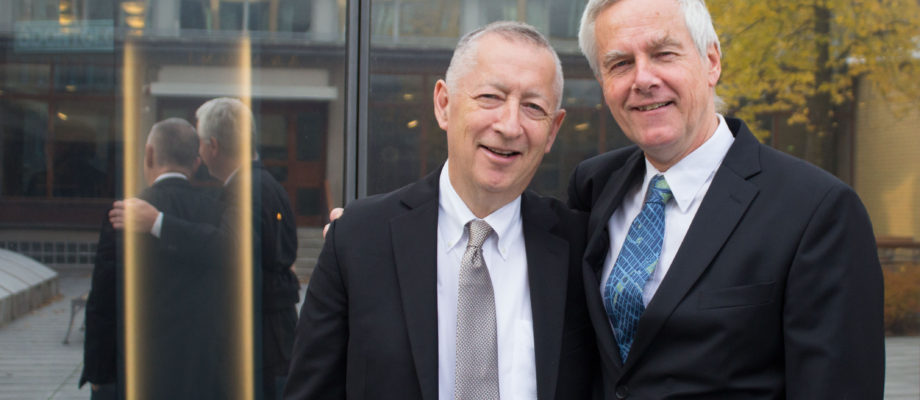HONORARY DOCTOR 2016. Paul Blanc, a newly appointed honorary doctor at Sahlgrenska Academy, is not only a leading researcher in occupational medicine, but also in the history of the field. In his lecture at the Arvid Carlsson Lecture Hall, he described how, for 150 years, the rayon industry clearly prioritized profit over people in the production of viscose.
In a few weeks, Paul Blanc’s new book will be published on the occupational medical history of artificial silk, commonly known as rayon or viscose. Viscose is made of cotton or cellulose. It is a cheap material that also has many areas of use—it is used in both the rubber and textile industries and is the base of synthetic sponges, sausage casing, and cellophane. But the manufacturing process is hazardous to humans. Specifically, the process involves a solvent called carbon disulfide, which is toxic and affects the nervous system. Exposure to the substance can lead to Parkinson’s disease, blindness, and serious mental illness, and increase the risk of cardiovascular disease.
Paul Blanc described how it has long been known that carbon disulfide is toxic to humans, but manufacturers concealed the information. “The history of artificial silk production is one of the clearest examples around of how industry can prioritize profit over human health,” concluded our new honorary doctor during his lecture.
Mental health epidemics at factories
The chemical substance carbon disulfide was created in the eighteenth century and became an important solvent for the rubber industry in the nineteenth century. During industrialism, individual doctors reported early on about the toxicity of the substance to people, due to the high occurrence of serious mental illness—including hallucinations and suicide—among factory workers. The first cases were described in medical journals in the early twentieth century, first at a factory in Philadelphia and then from a facility outside of Moscow. However, these reports led nowhere. Factory owners dismissed them, maintaining that the problems were overstated or that they had already addressed shortcomings at their facilities.
The name “Rayon” was registered in 1925, and the textile became an important symbol of the Art Deco period. The material was produced by multinational companies that were not interested in studying the risks to which they exposed their workers. Paul Blanc mentioned Dr. Alice Hamilton, who stated her concerns about carbon disulfide in several publications. In her memoires, she talks about being contacted by a nurse at a large factory where a widespread epidemic of mental illness had broken out among the workers. Despite several inquiries, Dr. Hamilton was not allowed to visit the facility.
During World War II, viscose played an important role both as a cheap textile for armies and in the production of aircraft tires and other war materials. In Germany, Jews were used as slaves in rayon factories, where they worked without gloves until they became blind. “The yellow stars that Jews were forced to wear were also made of a textile blended with rayon,” said Paul Blanc.
In the second half of the twentieth century, all European factories that manufactured rayon and viscose closed. In recent years, the material has started to be re-launched as a green alternative because it is made of cellulose fibers, which are a renewable material. But the production process often still requires the use of carbon disulfide and manufacturers are still quiet about its hazardous health effects.
Paul Blanc is a professor at the University of California, San Francisco (UCSF). He is leading several major epidemiologic studies about how airways are affected by factors at work and in the environment. The host of Paul Blanc’s honorary doctorate is Professor Kjell Torén.
In conjunction with the doctoral conferment, Paul Blanc gave a lecture on October 20, which began with a celebration breakfast at the Arvid Carlsson Lecture Hall.
To read more about the partnership between the University of Gothenburg and Paul Blanc and his significance in occupational medical research at Sahlgrenska Academy here: http://130.241.135.136/2016/05/33786/











